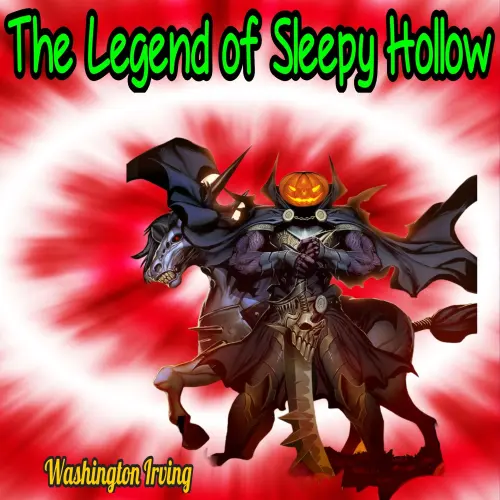Washington Irving
The Legend of Sleepy Hollow

Unabridged
1 hour 25 minutes
Some articles contain affiliate links (marked with an asterisk *). If you click on these links and purchase products, we will receive a small commission at no extra cost to you. Your support helps to keep this site running and to continue creating useful content. Thank you for your support!
Unabridged
1 hour 25 minutes
Some articles contain affiliate links (marked with an asterisk *). If you click on these links and purchase products, we will receive a small commission at no extra cost to you. Your support helps to keep this site running and to continue creating useful content. Thank you for your support!
The Legend of Sleepy Hollow by Washington Irving is a gothic story by American author Washington Irving, contained in his collection of 34 essays and short stories titled The Sketch Book of Geoffrey Crayon, Gent. Written while Irving was living abroad in Birmingham, England. "The Legend of Sleepy Hollow" was first published in 1819. Along with Irving's companion piece "Rip Van Winkle", "The Legend of Sleepy Hollow" is among the earliest examples of American fiction with enduring popularity, especially during Halloween because of a character known as the Headless Horseman believed to be a Hessian soldier who was decapitated by a cannonball in battle. In 1949, the second film adaptation was produced by Walt Disney as one of two segments in the package film The Adventures of Ichabod and Mr. Toad.
Plot:
The story is set in 1790 in the countryside around the Dutch settlement of Tarry Town (historical Tarrytown, New York), in a secluded glen known as Sleepy Hollow. Sleepy Hollow is renowned for its ghosts and the haunting atmosphere that pervades the imaginations of its inhabitants and visitors. Some residents say this town was bewitched during the early days of the Dutch settlement, while others claim that the mysterious atmosphere was caused by an old Native American chief, the "wizard of his tribe ... before the country was discovered by Master Hendrik Hudson." Residents of the town are seemingly subjected to various supernatural and mysterious occurrences.
They are subjected to trance-like visions and frequented by strange sights, music, and voices "in the air." The inhabitants of Sleepy Hollow are fascinated by the "local tales, haunted spots, and twilight superstitions" on account of the mysterious occurrences and haunting atmosphere. The most infamous spectre in the Hollow, and the "commander-in-chief of all the powers of the air," is the Headless Horseman. He is supposedly the restless ghost of a Hessian trooper whose head had been shot off by a stray cannonball during "some nameless battle" of the Revolution, and who "rides forth to the scene of battle in nightly quest of his head".
Plot:
The story is set in 1790 in the countryside around the Dutch settlement of Tarry Town (historical Tarrytown, New York), in a secluded glen known as Sleepy Hollow. Sleepy Hollow is renowned for its ghosts and the haunting atmosphere that pervades the imaginations of its inhabitants and visitors. Some residents say this town was bewitched during the early days of the Dutch settlement, while others claim that the mysterious atmosphere was caused by an old Native American chief, the "wizard of his tribe ... before the country was discovered by Master Hendrik Hudson." Residents of the town are seemingly subjected to various supernatural and mysterious occurrences.
They are subjected to trance-like visions and frequented by strange sights, music, and voices "in the air." The inhabitants of Sleepy Hollow are fascinated by the "local tales, haunted spots, and twilight superstitions" on account of the mysterious occurrences and haunting atmosphere. The most infamous spectre in the Hollow, and the "commander-in-chief of all the powers of the air," is the Headless Horseman. He is supposedly the restless ghost of a Hessian trooper whose head had been shot off by a stray cannonball during "some nameless battle" of the Revolution, and who "rides forth to the scene of battle in nightly quest of his head".
Lismio